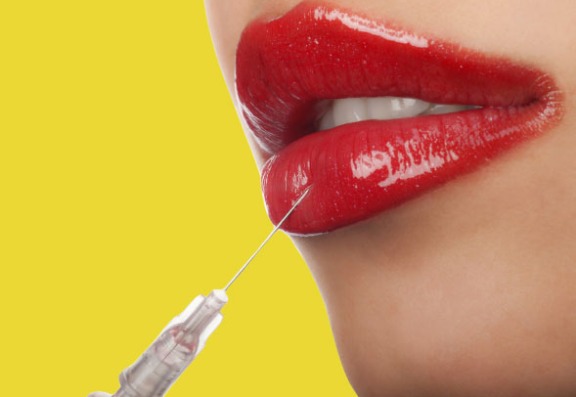A key priority for many of my clients is to look great for their age.
Typically, my patients do not want to look dramatically different. They just want to looker fresher and brighter, which is where sensitive and appropriate use of aesthetic injections can help.
The reality is that as we age, the elasticity of our skin deteriorates.
Lines develop and we can lose volume. This can lead to individuals looking tired and cross.
There are many things that can be done to minimise the effects of ageing, including having a good skincare regime and always using a quality SPF cream, but some deterioration in the quality and structure of the skin is inevitable.
Our skin loses both collagen and elastin, key components that provide youthful support and definition to overall facial structure.
So, the key question I am often asked is, “Can aesthetic injections help with this inevitable deterioration?”
When answering this it is important to look at both dermal fillers and wrinkle relaxing treatments such as Botox®. Both play their part in reversing the signs of ageing but in very different ways, so let’s look at both individually.
What are dermal fillers?
Dermal fillers are small injections of gel, made up of hyaluronic acid, that fills in wrinkles and adds volume to soft tissue.
A dermal filler treatment can smooth out lines and wrinkles, replace lost volume, restore elasticity and tone AND, most importantly, create a natural look and feel.
Hyaluronic Acid - a naturally occurring substance - that helps the skin to retain moisture more effectively and create a 'cushion' to add volume and definition to ageing skin.
You can have dermal fillers in different parts of your face: around the eye, cheeks, mouth and jawline, as well as lip fillers administered directly into the lip tissue.

Do injectables work?
How long do Dermal Fillers last?
It depends on how your body reacts and which hyaluronic acid is used, but most dermal fillers will last between 9 to 24 months.
Do Dermal Fillers have side effects?
As with any injectable aesthetic treatment, there is a small risk of a patient experiencing side effects post-treatment with dermal fillers. Many patients experience minor bleeding at the injection site, often followed by temporary and minor swelling, bruising, redness, and soreness of the treatment site. However, these symptoms are usually not serious and should resolve on their own.

Do dermal fillers hurt?
There may be a slight discomfort whilst the filler is being injected into the face but it can be minimised by applying an anaesthetic cream before treatment.
JUVÉDERM®, one of the brands of fillers that we use in the clinic, actually contains lidocaine which can further reduce the discomfort during the procedure.
What is the difference between Botox® and Dermal Fillers?
There is a significant difference between Botox and fillers.
Botox stops the small muscles in your face from making the movements that cause wrinkles, whilst dermal fillers plump from below the wrinkle to smooth them out and promote a youthful look.
Let’s look at the key elements of wrinkle relaxing injections...
What is Botox® or Bocouture®?
Botox® and Bocouture® are brand names for a form of Botulinum Type A, which is produced by the bacteria clostridium Botulinum.
This purified protein has been used widely in aesthetics since the 1980s. By blocking the signals between the nerves and the muscle, muscle contraction is reduced.
This means that fine lines and wrinkles are smoothed and the aging process is temporarily halted.

How does aesthetic injection treatments work
Botulinum Toxin is injected into the facial muscles and blocks the flow of chemical messages from the nerve to the muscle, causing the muscle to contract. Without these chemical messages, the muscle stays in a resting state temporarily (usually for between 8 and 12 weeks) until the flow of these messages is restored when new nerve endings are naturally produced by the body.
Botulinum toxin helps to significantly reduce the movement of the muscles that cause expression lines (or 'dynamic' facial wrinkles). It may not cause existing expression lines to disappear completely as this depends on the overall quality and condition of your skin, and it is not a suitable treatment option for lines and wrinkles that are present without facial movement - in both of these cases, your practitioner will advise you of the most appropriate course of action to tackle these particular skincare concerns.
Wrinkle relaxing treatments of this nature are not a 'one-size-fits-all' treatment, and it is important to seek advice from your aesthetic practitioner to discuss your needs and requirements prior to the administration of any treatment.
Injections in different areas and with different quantities of toxin can produce different effects in terms of the reduction of dynamic facial movement, so always trust an experienced medical professional to tailor a treatment to your unique and specific needs.
Wrinkle relaxing treatments usually take around 30 minutes to complete. Results are usually noticeable between two and five days after treatment but can take up to two weeks for the final look to be achieved.
Botulinum Toxin is gradually removed naturally by your body and usually, the treatment will need to be repeated every three to six months.
Wrinkle relaxing injections are so effective that around 90% of people who try them decide to have more treatments once the effects begin to wear off.

How do I know if aesthetic treatments are safe and right for me?
Wrinkle relaxing injections are generally low-risk with very few side effects. A tiny amount of Botulinum Toxin is administered to the agreed treatment area using a disposable syringe with a very fine needle. Most patients report treatment as virtually pain free.
At my clinic we take the safety of our clients extremely seriously.
Therefore, the first step for anyone wishing to receive wrinkle relaxing injections is to have a full consultation with me to ensure that you are a suitable candidate for Botox® or Bocouture®.
How long do wrinkle relaxing treatments usually take?
Whatever your concerns or objectives, why not book a consultation with an experienced practitioner to find out the best approach for you.
This is an essential precursor to treatment and I would never treat a patient without first completing a thorough assessment of your skin and taking a full medical history.
Not all products are right for everyone and it is important to understand what each client is trying to achieve and identify any contra-indications before recommending a particular treatment.

Author: Clare McLoughlin
Clare McLoughlin has been a general nurse since 1988 and is an Independent Nurse Prescriber and advanced procedure aesthetic nurse and trainer with more than 16 years’ experience in the aesthetic field.Clare is a member of the Save Face UK Expert Advisory Board.
As a recognised aesthetic trainer, Clare is known for her professional approach and skill in the field of aesthetics and has appeared on a number of television programmes performing injectable aesthetic treatments. After working as a practitioner for a large national chain 2001-2003, Clare started her own business – Appearance Based Medicine – in 2004, to enable her to provide the highest level of patient care and satisfaction.
Clare is has been an advanced techniques trainer in Botulinum toxin treatments and Skin fillers since 2004. As well as training other Healthcare professionals in this field, Clare is a member of the British Association of Cosmetic Nurses (BACN) and British Association of Sclerotherapists (BAS).
Clare is recently published and her clinic Appearance Based Medicine is located in Marlow- on- Thames.
To view more blogs by Clare McLoughlin please click here.
